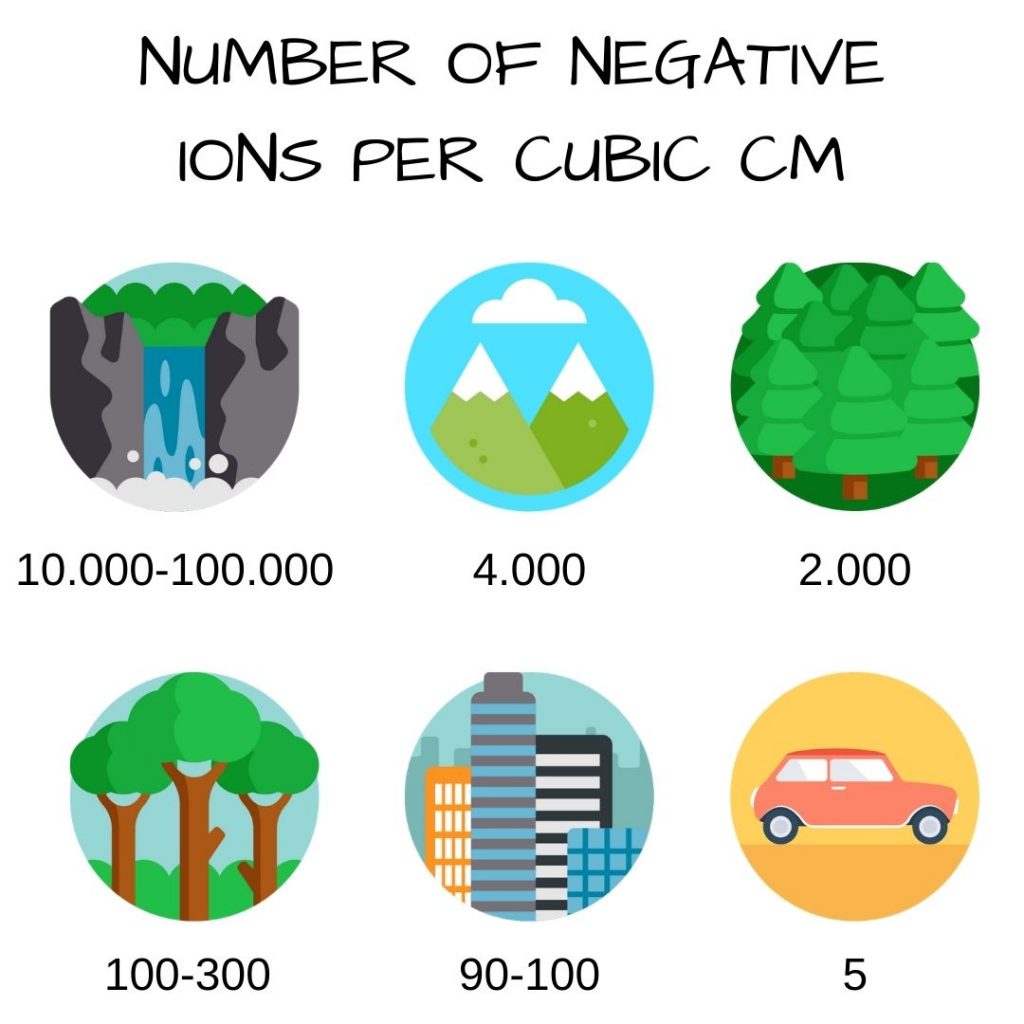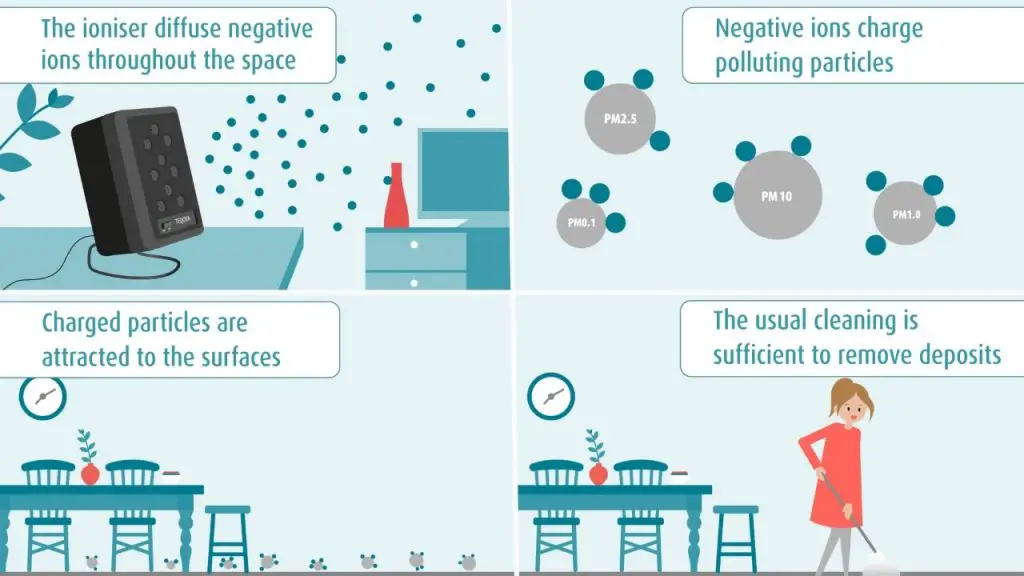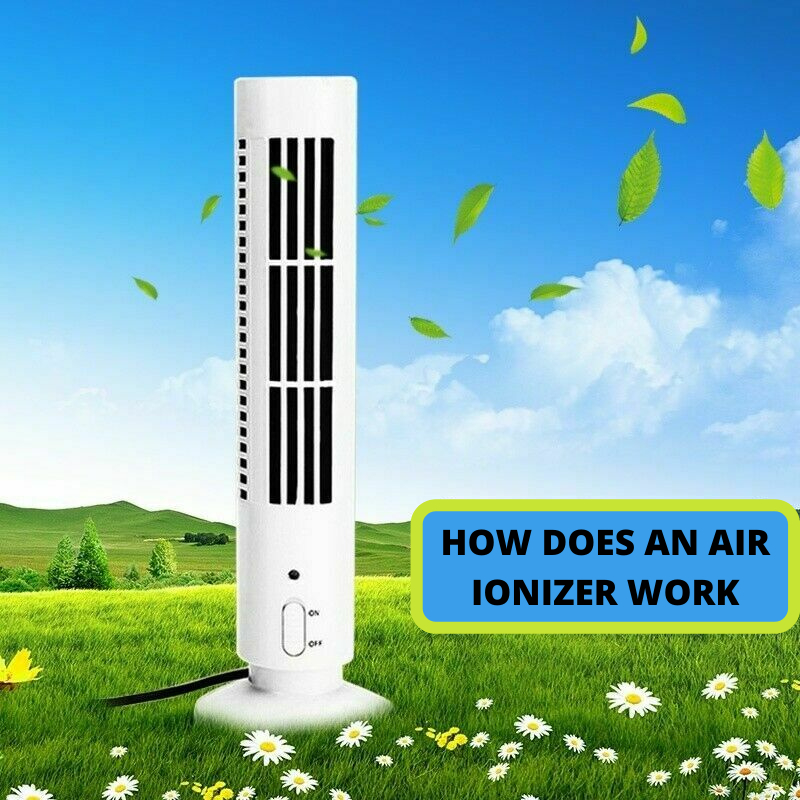Before we go shopping for the newest and latest ionizer for air purification we must first be able to answer this question: how does an air ionizer work?
You want to improve indoor air quality, so this is important because you want to know what you are actually buying and you want to be able to make a rational decision about your next purchase. There are tons of products on the market that claim to be air ionizers – some are, but many are not air cleaners (at least not in the true sense of the word).
Do ionizer really work ?
Yes they Do work, Air ionizers work by releasing a large amount of negatively charged particles called negative ions. Negative ions are attracted to positively charged particles (principle of polarity), which are basically all air pollutants. This means that negative ions and air pollutants attach themselves to each other, effectively removing them from the air.
To better understand air ionizers we must first learn about negative ions since the word ionizer derives from the word ion. Do not worry, we will keep it short and straight to the point and explain the difference between ozone generators, air ionizers, and ionizer air purifiers. But they all have one common task, which is to purify the air
Positive and negative ions
As you probably already know from physics, an atom consists of an atomic nucleus and electrons that move around it – an electron envelope. Atoms do not have an electric charge because they have the same number of positive protons on the inside and electrons on the outside. However, when substances react with each other, their atoms either receive, emit, or divide electrons. If an atom accepts electrons an ion with a negative charge is formed (also called an anion). If an atom emits electrons, a positive charge ion is formed (called a cation).
In nature, ions are only generated by a strong impact or by the high voltage which throws a negative ion from the rear rail of an atom. This means that many negative ions are released by lightning, waterfalls, or by waves banging against a rock.
There are usually around a couple of thousand ions in a cubic centimeter of air (cm3). You can find the biggest amount of negative ions in nature, specifically in the mountains, near water, in the forest, etc. This is very important to understand as it is a key component of understanding how an air ionizer works. Here is a small comparison of different areas and the amount of negative ions we can find there.
- An apartment or office in a city – between 30 and 50 ions/cm3
- A bigger city – between 200 and 450 ions/cm3
- Village area (so places that are not urbanized) – between 800 and 1.800 ions/cm3
- Near waterfalls and mountains – around 5.000 ions /cm3
- Near Niagra falls (the largest waterfall in the world) – 100.000 ion /cm3

As you can probably notice there is a huge difference in the number of ions we can find in different areas. The key thing you need to know here is this: the more negative ions there are around us, the better.

Can you smell this photo? We sure can!
Now that we have a basic understanding of negative air ions, we can move on to the next step.
Types of air ionizer
There are several categories of ionizers available, including:
Bipolar Ionization:
This is a modern technology that generates both positive and negative air ions. It’s often integrated with other equipment, such as HVAC systems. As it’s a relatively new technology, the amount of research available is still limited.
Ionizing Fans:
These are fans that not only circulate air using their rotating blades, enhancing ventilation in a space, but also have an ionizing feature. These devices distribute air and foster air movement while simultaneously emitting negative ions.
Air Purifiers with Ionizers:
These are devices designed to eliminate harmful particles from the air. They are also referred to as room air cleaners, portable air cleaners, or air sanitizers. Typically, air purifiers employ a filter and fan to purify the air. They are effective at removing dust and pollen, making them a recommended choice for individuals with asthma or allergies. Some air purifiers are equipped with ionizer technology, allowing the device to cleanse the air while also releasing negative ions.
How does an air ionizer work
This part can be quite difficult and very technical to describe, but we are going to present it in a very simple way that is easy to understand how they purify the air. We can divide the whole process into four key steps. These are:
- Air ionizers work by releasing a large number of ions into the air. We are talking about millions of negative air ions per second (good ionizers) per cubic centimeter, every second.
- Negative ions then attach themselves to positive ions. As you know from physics, this is basic polarity – minus attracts plus. All the harmful particles in the air are positive particles. Dust, dirt, soot, viruses, bacteria, mold, organic compounds… we can classify these as “positive ions” for an easier understanding. They vary in size and we can not see most of them with our naked eye. So if you had a question whether do ionizers kill viruses? Then yes, they do kill viruses and bacteria.
- The newly formed mass of negative ions and harmful particles becomes heavy enough for gravity to pull down on the floor.
- Once this mass is on the floor, it can not rise back into the air, so we can not inhale it. This is important because air pollution is becoming a bigger problem each day and we can suffer many negative consequences by inhaling these harmful particles.

source: Teqoya
As you can see from the picture, the process is pretty straightforward, yet very effective. Air ionizers are the most effective type of air purifier can you can get. They remove even the smallest particles, which is an advantage over many air purifiers. Most HEPA air purifiers can not remove the smallest particles, which are usually the most dangerous ones. Here is a relevant post I made a while ago, answering the difference between “regular” air purifiers that use filters and air ionizers.
The biggest factor in an air ionizer’s effectiveness is negative ion emission. In other words, how many negative ions do the ionizer release? Since every harmful air particle needs at least an ion to successfully neutralize it, you need a high enough ion emission.
Do ionizers kill viruses ?
Not 100%, as per many studies it’s stated that ionizers won’t kill virus with it’s small electric charge so using them for covid is not recommanded as it won’t kill them but ionizers do keep prevent theses harmful viruses from getting inside your body through the air.
In conclusion
Negative ions are very important for our wellbeing. The more ions there are around us, the better it is for us. However, this is especially hard to achieve in urbanized areas such as cities. Closed spaces such as an office/house/apartment are even worse as they contain the least amount of ions.
This is why we need air ionizers – they release negative ions where we desperately need them – in our homes and even in our cars to improve indoor air quality. People in large cities and industrial zone have it the worst, so they need to focus on air purification and need to purify air. We can get our dose of ions in nature anytime, but an air ionizer is a great alternative to this. With it, we can bring nature into our homes and breathe quality air once again – even from our own couch.
So…how does an ionizer work? Now you know the answer – by releasing a large number of ions into the air, making it clean, and giving it that fresh nature-like smell. And the best way to describe them is that they are ozone-generating air cleaners
I would like to end this blog with a link to my other post, where I list and describe the 5 best negative ion generators to get in 2024. If you are in the market for an air ionizer, this list will come in handy, as there are quite a few “bad” ionizers on the market currently.
FAQ’s
Is Ionized air Harmful?
Is Ionized air Harmful? Yes, Ionized air is harmful to your health and as well as harmful to the environment. It can cause breathing-related health problems when inhaled, and this will lead to medical problems.
Which is Better Air purifier or Ionizer?
Which is Better air purifier or Ionizer? Well we’d suggest you get an Air purifier because Air Purifier is better than an Air Ionizer. And Air Ionizer is a bit more harmful when compared to air purifier.
What happens to the particles?
The particles remain on these surfaces until they are cleaned off. Some ionizers have collector plates that attract these charged particles and can be cleaned regularly.
Does an air ionizer purify the air?
While an air ionizer can make particles in the air settle onto surfaces, it does not remove them from the environment entirely. Therefore, while it can help reduce the amount of particulate matter that you might inhale, it doesn’t necessarily purify the air.
Is it safe to use an air ionizer?
In general, air ionizers are considered safe. However, some ionizers also produce ozone, which in high concentrations can be harmful to health. It’s important to choose an ionizer that does not produce ozone or produces it only in very low, safe levels.
